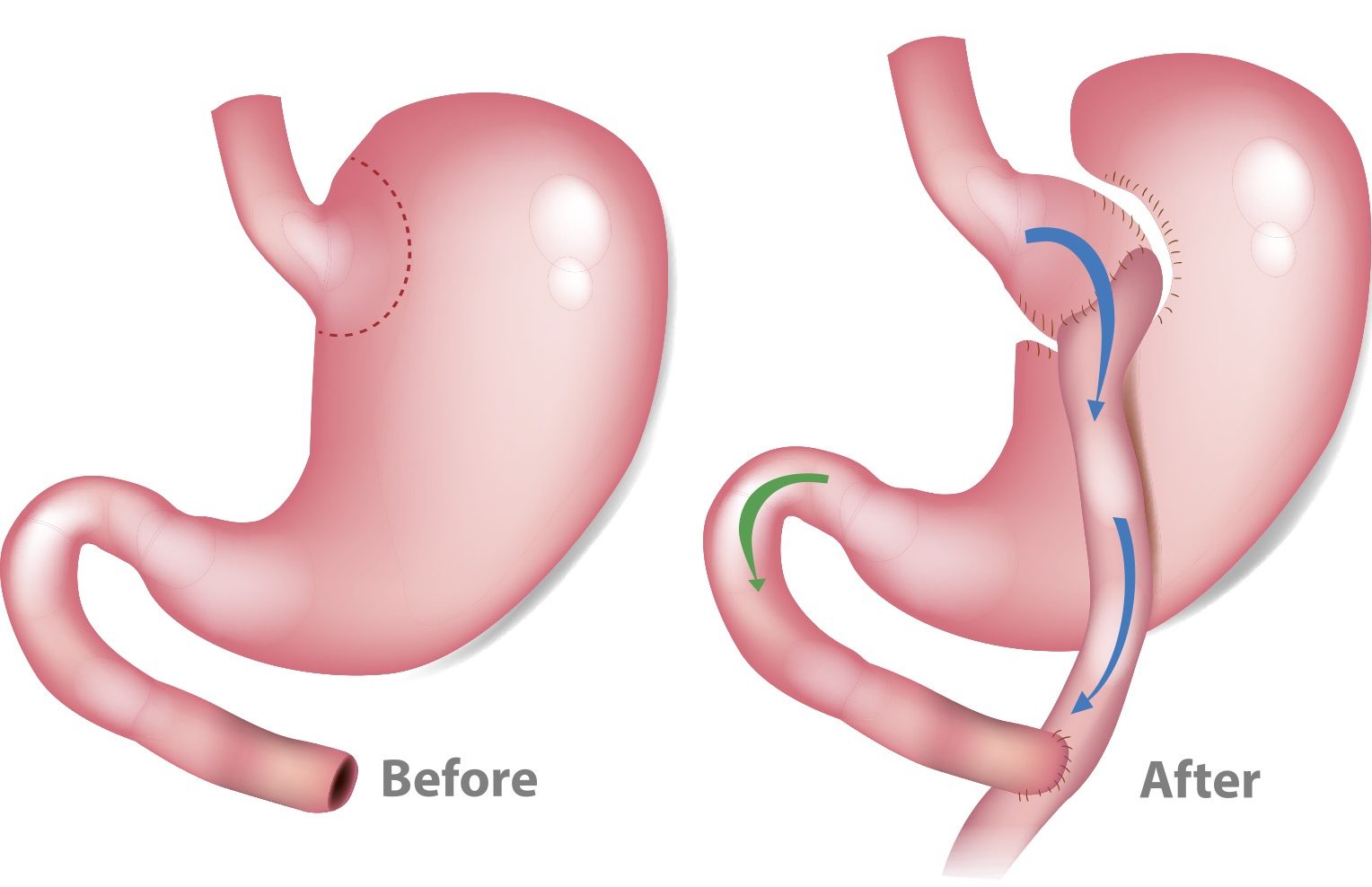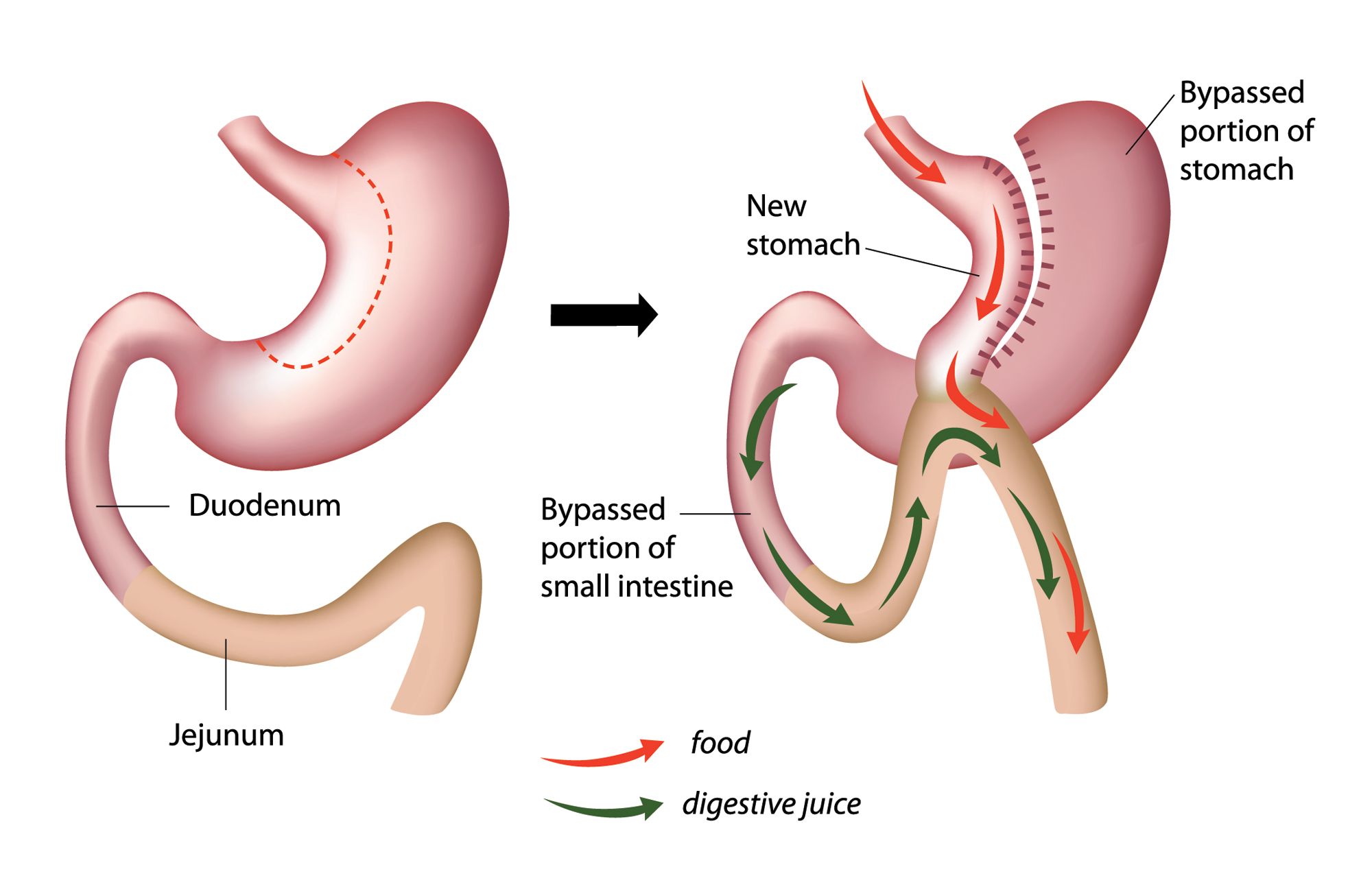Gastric Bypass
This process is a malabsorptive and restrictive surgery.
Roux en Y Gastric Bypass
This process is one of the most commonly performed bariatric surgery procedure in the world. The stomach is cut from the bottom of the esophagus. So, we get a small stomach pouch that the foods will go into and a larger stomach pouch that will not be used. Then the surgeon cuts the small intestine from 40-60 cm and connects the lower end of the small intestine to the small stomach pouch. The other end of the small intestine from the big blind stomach pouch containing the bile and pancreatic secretions is connected to the middle of the small intestine that was connected to the new small stomach.

Mini Gastric Bypass
This process has been described as a modification of the Roux-en-y gastric bypass in 1997. This is a simpler and shorter operation. First, the surgeon creates an elongated stomach pouch. This pouch is larger than roux en Y gastric bypass. Then the small intestine is connected to the small stomach.

Disadvantages
A blind gastric pouch that can not be checked endoscopically, is left in the body.
Bile reflux
Stomach ulcer
Dumping syndrome (nausea, vomiting, low blood pressure and fainting due to rapid food passage into the small intestine)
Electrolyte and vitamins disorders
